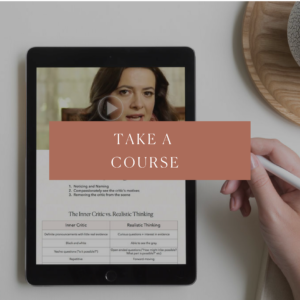[This post was originally published at The Change Blog and ForbesWoman]
Most of us learned early in life that “thinking about it” is always a good idea. That is what reasonable, intelligent people do when they have a big decision in front of them, right? They think about it.
The truth is that quite often, when it comes to the big questions in our lives — Should I take the job? Should I start the business? Should I marry her? Should I relocate? — thinking gets us stuck.
By thinking, I don’t mean all neurological activity. I mean our everyday definition of thinking: the furrowed brow, fist at chin, solitary activity in which we muse on a subject, evaluate pros and cons, make internal arguments and then supposedly “figure it out.” This often leaves us more confused than when we started, further away from our own answers.
I see this frequently as a coach, as a friend, and I know it from my own experience too. I once took a month to “think about” what kind of job I wanted, and ended the month with no new insights, just a little crazy from all that time I sat at home “thinking about it.” I see coaching clients and friends taking time to “think about” what they want to do next, and getting really lost and bummed out in the process. I have a friend who drove herself into a huge pit of stress and upset “thinking about” whether she wanted to marry her boyfriend or not.
When thinking is helping you find clear answers that feel right to you, excellent! Feel free to use it. I’m certainly not anti-thinking. But when approaching a question by thinking about it is leading you down a road that feels repetitive, narrowing, overwhelming, or crazy-making, try these other tools:
1. SIMMER
Simmering is a way of processing that is less conscious and deliberate than thinking. When we simmer on something, we sit with it over a period of time. We let our full mind — conscious and unconscious — work on it while we go about our lives. We cook it, just as we would a stew on the stove.
Like an oven timer going off, simmering sometimes results in a new insight or answer “popping up” when we least expect it—often while we are immersed in some unrelated, absorbing activity. It can also slowly build an answer over time, like flavors gradually developing in a stew, settling into a rich taste.
2. EXPERIMENT
Experiments allow us to gather information from lived experience, not mental reasoning. They test out new ideas, behaviors, or approaches. If you are contemplating transitioning to a new field, instead of “thinking about it,” take a class on the subject, do related freelance work, or spend time with the kinds of people you’d be working with. If you think you might want to take up piano again, instead of “thinking about it,” just go play one within 48 hours, and see how it feels. Notice what you learned from the experiment.
3. WRITE
Most of us won’t write the same things over and over again, but we often get stuck thinking the same thoughts things over and over again. In this sense, writing moves us past our mental loops.
In addition, when we read our words on the page, we have the opportunity to observe our own thoughts. Observing our thoughts will always provide more insight and forward movement than thinking them.
4. SHARE
Sharing forces us to clarify our beliefs, desires and unanswered questions. Just as writing helps us get perspective on our thoughts because we literally see them, sharing helps get perspective because we hear ourselves.
Find a great listener who can create a space for you to share. Or, be bold and ask a good friend to participate with you in a 20-minute conversation with special rules: You share. They ask you short, simple open-ended (not yes/no) questions back to help you probe your ideas further. No statements on their part — just questions. You can exchange the favor, helping them explore an important topic in their life.
5. CHECK YOUR GUT
As a coach, I can’t tell you how often I’ve heard clients come in overwhelmed by all the pros and cons and possibilities that thinking has led them to, when the answer is actually already within them, and is ready to emerge as soon as I ask, “What does your gut say?” Ask yourself this question, and be open to the answer — even when it is uncomfortable or scares the hell out of you.
If you feel disconnected from your instinct and can’t hear it (which commonly happens), put your attention to the place in your body where you feel it. You can also place your hands there. Take a few breaths, release tension in your body, and then tune in to your gut instinct and see what information is waiting for you. Hint: Your gut’s answers are simple. No long explanations needed.
Simmer. Experiment. Write. Share. Check Your Gut. You may find that one or two of these tools work best for you. Here’s my suggestion. Don’t decide which of these to use by thinking about it. Instead, check your gut, or experiment with a couple.
And, yes, how could I not say it? Please don’t think too much about this piece.
Love,
Tara
photo credit: Green Chameleon







